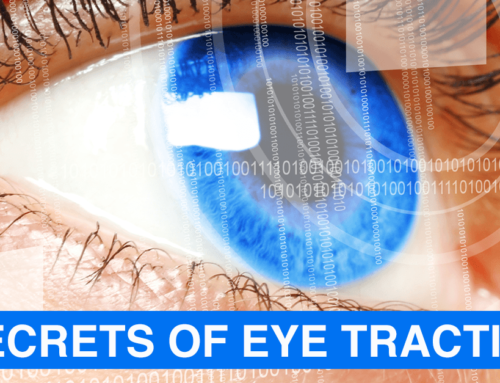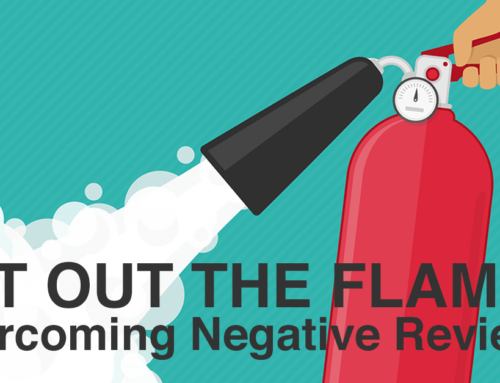You’ve probably heard of Maslow’s hierarchy, part of a classical 1940’s publication about psychology and behavior. We often see diagrams like the one shown that define the pyramid of human behavior. According to Maslow, self-actualization is the human desire for self-fulfillment, for a person to become everything that one possibly can. In many ways, these stages mimic what we see in the process of website conversion, so naturally, if you address each psychological level, you can optimize customer conversions.
Let’s review the stages of Maslow’s hierarchy to see how they align with conversion rate optimization, starting at the bottom of the pyramid.
PSYCHOLOGICAL NEEDS
Just as humans acquire food, water, warmth and rest to survive, website visitors seek information. When users search and click a link within the results, they immediately want to make sure it meets basic needs.
I’m searching for information about website developers in Los Angeles. Click. Why am I seeing this website about building my own website? Click back. Click. Ah, here’s a site from a firm based near me in LA.
Takeaway: Visitors search to meet their basic needs first. If they land on a page that doesn’t meet the original request, they move along quickly.
SAFETY NEEDS
Next, according to Maslow, humans seek safety from the elements. Similarly, website visitors review the landing page for signs of safety, something to provide confidence about the information they’re about to read more closely.
Hmmm. They say they’ve built hundreds of websites. Their own website looks like they know and use modern web design and development techniques. There are no errors on this page. The copy appears to be clean and readable. They’re addressing many of my questions without me having to fill out a form or call them. So far, so good…
Takeaway: Visitors will reject a site that doesn’t appear to satisfy “the lizard brain”: fight or flight! If you meet visitor needs with safety and security, freeing them fear, they’ll stick around longer.
BELONGINGNESS AND LOVE NEEDS
The next level of Maslow’s pyramid addresses love and belongingness needs – friendship, intimacy, affection and love. Of course, you want your visitors to love you, and the way to accomplish that is by having a genuine conversation. Make the user feel invited to be your partner without sounding like a sleazy salesperson.
These guys talk in regular language, not marketing babble. They sound smart but approachable, and I feel like if I had a problem, they’d call me back and tell me the answer to my question.
My colleagues and I often talk about the concept of ‘twinsumers’. When we read reviews on Amazon or restaurant reviews on Yelp, we tend to look for the ones that sound like ‘us’. Think about reading product reviews – don’t you look for people who you share language or other opinions with? If someone mentions a book or restaurant that you like, you assign higher weight to their opinions.
Takeaway: Use the language of your customer. Talk TO them, not AT them. Be approachable.
ESTEEM NEEDS
Maslow’s next level describes our human need for achievement, status, prestige, self-respect and respect from others. With websites, esteem needs would be addressed by things like social proof, such as endorsements or testimonials, or exclusivity. The old adage “no one wants to eat in an empty restaurant” certainly applies with websites – having customer logos from well-known brands, testimonials from satisfied clients, and prestigious awards all drive customer engagement.
Check this out: they have been selected as Top 100 website design agencies in the US! Their clients include some big brands. They have testimonials from some heavy hitters in a bunch of different vertical markets. Wow, this is a company I would definitely want to be aligned with.
Takeaway: Definitely use social proof – the bigger, the better. If you can use customer logos, definitely include them (it’s easier to find them when scanning a page). If you’ve won awards, they help too.
SELF ACTUALIZATION
The top of the Maslow pyramid is self-actualization, which is when humans realize their full personal potential and seek personal growth and peak experiences. Does your product or service add to the quality of life? If you can show something even above and beyond, it goes even further. You’re looking for this response:
Yes!
Conversion Rate Optimization continues to evolve, so make sure you’re iterating and testing to keep up with trends and industry changes (e.g., Google web crawling!). With website design, the sum is generally greater than the individual parts. If you have addressed all the user needs, from the base of the pyramid to the top, you will be able to convert more visitors. What can you do at each level to make the user experience more convincing? Run split tests to see what you can do better, but make sure you have addressed each area fully.
Further Reading on Conversion Rate Optimization
Qualaroo
Wider Funnel
ConversionXL




![Video Engagement [Infographic]](https://twistedpuppy.com/wp-content/uploads/2017/08/twisted-puppy-blog-video-engagement-1-500x383.png)


Leave A Comment